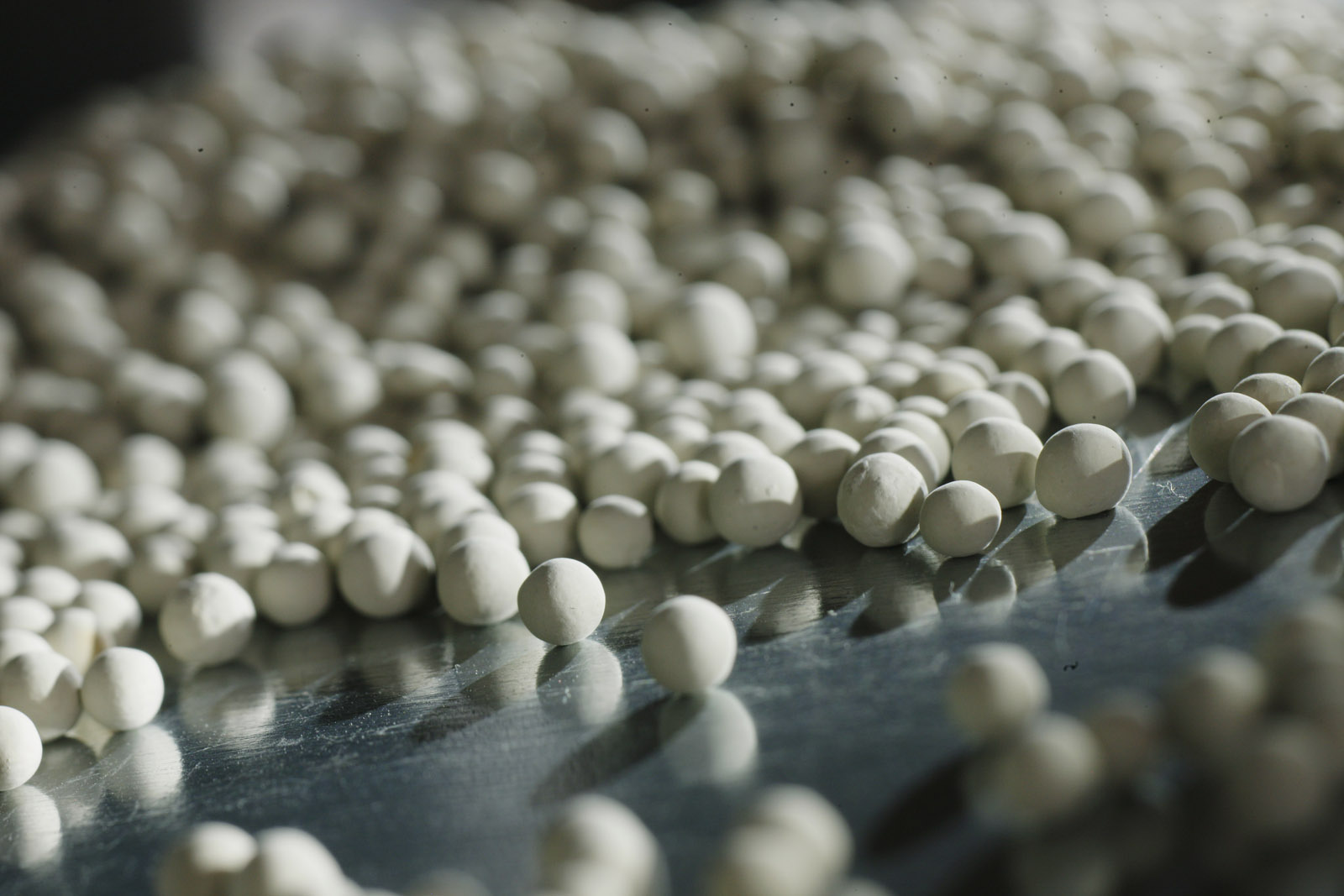Hannover Messe 2014
Sorption energy storage and conversion for cooling and heating
New materials and technologies are making it possible to utilize thermal energy more efficiently. Visit Hall 13 at the Hannover Messe (April 7-11) to find out how researchers from the Fraunhofer Energy Alliance are applying this to heat and cool spaces and industrial processes.

In many industrialized countries, city skylines are dominated by imposing glass façades and skyscrapers made of concrete and steel. There is a drawback to these magnificent structures, though – they often get very hot in the summer, so they mostly need elaborate and costly air conditioning systems. And these already account for some 14 percent of Germany’s annual energy consumption. Experts reckon that total cooling requirements in buildings will triple by 2020.
Cooling and heating using metal organic frameworks
Thermally driven cooling systems are one possible alternative to traditional air conditioning. These systems use the evaporation of fluids such as water at low pressure to remove heat from the environment – an energy-efficient cooling method. Now researchers from the Fraunhofer Institute for Solar Energy Systems ISE in Freiburg are working on innovative sorbents that can store a particularly large amount of water vapor. To develop this material, researchers have turned to metal organic frameworks (MOFs). “The material is highly porous and can adsorb more than 1.4 times its own weight in water,” says Dr. Stefan Henniger from Fraunhofer ISE, describing one distinctive property of these sorbents.
MOFs can also be used in thermally driven heat pumps. Whereas electric heat pumps feature an electrical compressor, in these pumps an adsorbent performs the role of a “thermal compressor” while water serves as coolant. The gaseous coolant is adsorbed by the sorbent, thus leaving the gaseous phase. The heat that results from this adsorption into the material’s hollow interior is transferred away by a heat exchanger and can be used for heating. For this to function, the sorbent must be applied to the surface of the heat exchanger in such a way that the coolant evaporates continuously until the sorbent is saturated. Once the maximum adsorption capacity is reached, driving heat is used to drive off the stored coolant and liquefy it. The heat of condensation released in the process can also be used for heating.
To capitalize on the full potential of MOFs, it is important not only for water vapor to have easy access to the inner surfaces and pore space of the material but also for heat transfer away from the material to be effective. To aid the process, experts at Fraunhofer ISE have developed a new coating technique, for which they applied for a patent. This technique allows the new sorbents to be applied to equipment such as heat exchangers without obstructing heat and mass transfer. The research is being funded by the German Federal Ministry for Economic Affairs and Energy.
Heat from storage
Industrial facilities, power stations and biogas plants all make use of processes in which heat is essentially a waste product. Currently, hardly any of this heat energy is put to use – something that scientists at the Fraunhofer Institute for Interfacial Engineering and Biotechnology IGB in Stuttgart want to change. The researchers are working on developing and optimizing zeolite thermal storage systems.
Zeolites are crystalline minerals with a porous structure that adsorbs other substances such as water. Their internal surface area can be as much as 1000 square meters per gram. When the zeolite comes into contact with water vapor, it binds water molecules within its pores, releasing heat in the process. Drying out the material is a way to store heat; the energy this takes is released as heat as soon as water vapor is again adsorbed. Experts from Fraunhofer IGB are now developing technology to allow this heat storage technique to be used.
Thermochemical heat storage systems based on a combination of zeolites and water have the potential to amass up to 180 kilowatt hours of energy per cubic meter depending on the charging temperature and the application. To put this into perspective, traditional hot water energy storage systems normally have an energy density of less than 60 kilowatt hours per cubic meter. However, zeolite sorptive thermal storage devices are in this stage of development relatively expensive. “From an economic and technical standpoint, we currently see this technology being implemented in industry,” says Mike Blicker, group manager, heat and sorption systems at Fraunhofer IGB.